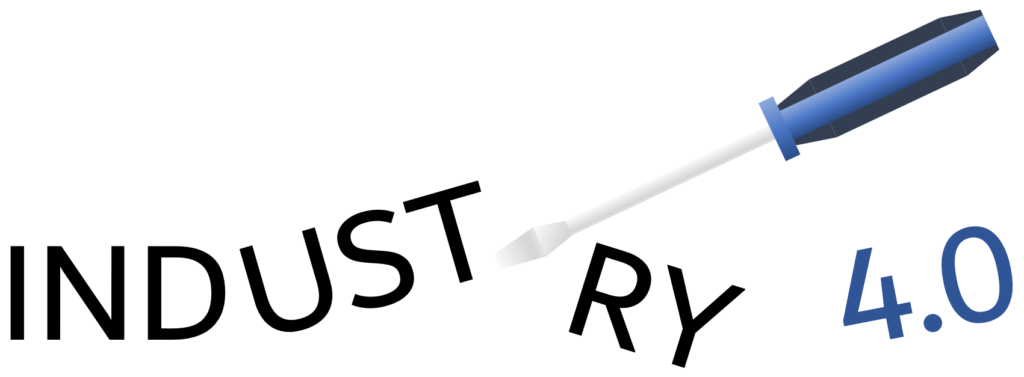What is Industry 4.0? Is it hype, a threat, or an opportunity?

It’s all of the above.
The hype?
It’s become a buzzword for the Fourth Industrial Revolution.
On the surface it’s a confusing gab-fest of acronyms and buzzwords surrounding industrial technology and concepts, and often confused with IoT.
In reality, the term “Industrie 4.0” was coined in a 2011 study about the Internet of Things and the fourth industrial revolution. It was followed in 2013 by Plattform Industrie 4.0, set up for the digitalisation of industry.
The threat?
Industry 4.0 is a strategy for use of technologies and manufacturing concepts to improve industry. These technologies and concepts are both powerful and connective, enabling advances in manufacturing capabilities, reducing labour input, and integrating the advantages of digitalisation.
They are also transferrable to industries outside of manufacturing.
For example, Smart Cities are supported by many of the same technologies. The digital twin, used to model products or processes in manufacturing, can be used to model cities for development and planning. Another example is in logistics, where mechatronics and robotics technologies from manufacturing are being used to automate logistics and distribution centres.
The real threat however, was a race triggered by Industry 4.0 being out in the open – in plain sight and supported from the top, by German Chancellor Angela Merkel.
Before “Industry 4.0”, industry’s convergence to it was organic, with organisations and regions evolving at their own pace.
Now every nation is scrambling to get in the race with their own version, each with their own name for it. Here in Australia, we use the German name, Industry 4.0. Prime Minister Malcolm Turnbull setup the Industry 4.0 Task Force in 2016.
The threat is that nations worldwide are putting support into industrial strategies which have far reaching and profound effects, and awareness is being driven from the highest levels of government.
The result will be great risk for those who lag and fail to evolve to a digitally transformed model. Disruption will be the final result, along with displacement of workers.
The opportunity?
For those that adapt to the forces driving Industry 4.0, great opportunities are possible.
Three examples of areas for opportunity are in innovation, scale of solutions, and value-add.
Take innovation. Industry 4.0 is not innovation, but it’s wholistic strategy and palette of technologies provides an abundance of toys to play with to develop innovations. You might run a service company troubleshooting office printers, but barely make profit due to competition. By innovating, you might find a way to speed up problem solving by developing a field service Augmented Reality support app. This improves profit, but then you realise you could license this app to your competitors and make even more profit. Soon, realising your app can be easily adapted for servicing of other equipment, you further enhance your solution and grow your app market beyond our original market.
On scale of solutions. Two of the pillars of Industry 4.0 are Internet of Things and Industrial Internet of Things. Opportunities for large scale solutions are enabled by these ideas. Using these, related companies that functioned separately before can now operate in unison, integrated by them. How does this help? By increasing the level of automation and exchange of data. Automation of business interactions and data flows builds new efficiencies, reduces human error, saves time, saves money, enhances speed of operations.
On value-add. Advanced Manufacturing and Big Data are also pillars of Industry 4.0. Advanced Manufacturing can produce items of higher quality and precision, allowing better pricing power and higher profit margins for manufactured goods. Using Big Data to capture and share information along the production value chain can add further value, by building trust. Imagine the confidence of buying a high quality, high precision product, where production information is available for every stage of manufacture, for full traceability. Price and profit can be boosted again, as the product is good, and the supplier and collaborators are trusted.
So where can I buy an Industry 4.0?
You can’t. It is a strategy for use of technology to enhance your business.
There are ongoing standards battles, with no end in sight. Industry 4.0 and all of its relatives are also constantly evolving. Some are already bringing up Industry 5.0 before 4.0 is even agreed upon.
But there is a way forward…
Pre-Industry 4.0, the world was moving that way anyway. Post Industry 4.0, at minimum a vision has been put out there. And we can edge towards it. Albeit, it is an evolving vision.
There is no benefit to wait as there is much risk in not moving. With the right strategy though, there is no need to focus on what Industry 4.0 is or is not. Instead, focus on what elements of it we can use, to bring us to closer to our desired vision.
It is these elements that provide us our possible next steps. With good guidance their realisation may be achieved. This allows us to move, step by step, through the Fourth Industrial Revolution.
If you would like to find out more, please get in contact here.
About the author
Odes is a consultant and advisor to C-suite leaders on trends and strategies for innovation, manufacturing, and industrial technologies. He is able to decode the complex into easily visualised solution paths. He is also the founder or the Business Innovation Matrix, a group of leaders, innovators, technologists and backers, devoted to driving change for greater good.
